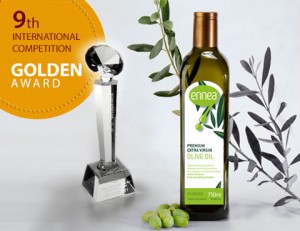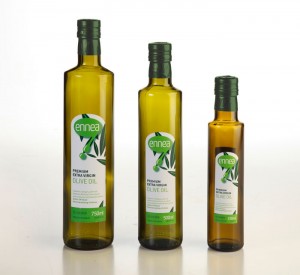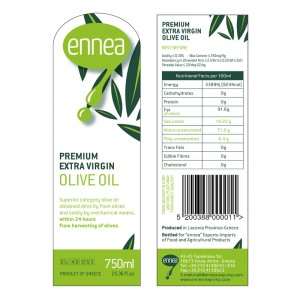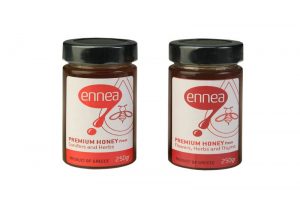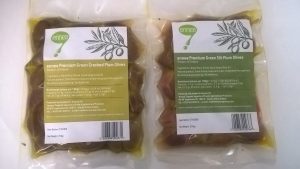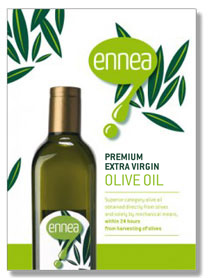Tasting of Extra Virgin Olive Oil for Consumers

When tasting olive oil, much of the oil’s characteristics are perceived through the sense of smell. Though most people enjoy olive oil with other foods, the following steps allow us to focus on the olive oil’s flavour without distraction:
- Pour a small amount of oil (about 1 tablespoon) into a small tapered wine glass.
- Hold the glass in one hand and use your other hand to cover the glass while swirling the oil to release its aroma.
- Uncover the glass and inhale deeply from the top of the glass. Think about whether the aroma is mild or strong.
- Next you slurp the oil; this is done by sipping a small amount of oil into your mouth while “sipping” some air as well. Slurping emulsifies the oil with air that helps to spread it throughout your mouth – giving you the chance to savor every nuance of flavour with just a small sip of oil.
- Finish by swallowing the oil and noticing if it leaves a stinging sensation in your throat.
Each of the above actions focuses our attention on a specific positive attribute in the oil. First we evaluate the olive fruit aroma (fruitiness) by inhaling from the glass. When the oil is in our mouths we further evaluate the aroma retro-nasally as well as determine amount of bitterness on our tongues. Lastly we determine the intensity of the oil’s pungency in our throats as we swallow it.
The pungency lasts few seconds and is a sign of a good quality Olive Oil.
A sensation similar to pungency but lasting longer time – over a minute – is a sign that the quality is bad (rancid).
The oil’s color is not addressed during tasting. The reason is that contrary to the common belief, color is NOT an indicator of either the oil’s flavour or quality.
Below are some of the attributes a good Extra Virgin Olive Oil shall possess (in green) as well as some of the attributes a bad Olive Oil will possess (in red)
(Note: the attributes below are used mainly by professional tasters who have received proper training. They are only for reference, but they can give an idea to how a good Extra Virgin Olive Oil would taste).
Good Attributes
Apple/Green Apple: indicative of certain olive varieties
Artichoke: green flavour
Astringent: puckering sensation in mouth created by tannins; often associated with bitter, robust oils
Bitter: considered a positive attribute because it is indicative of fresh olive fruit
Fresh: good aroma, fruity, not oxidised
Fruity: refers to the aroma of fresh olive fruit, which is perceived through the nostrils and retro-nasally when the oil is in one’s mouth.
Grass: the aroma of fresh-cut (mowed) grass
Green/Greenly: aroma/flavour of unripe olives
Green Tea: characteristic of some unripe olive varieties
Pungent: stinging sensation in the throat which can force a cough
Spice: aroma/flavour of seasonings such as cinnamon, allspice (but not herbs or pepper)
Sweet: characteristic of mild oils
Tomato/Tomato Leaf: indicative of certain olive varieties
Walnut/Walnut Shell: nutty (fresh not oxidised)
Bad Attributes
Brine: salty taste indicating that oil was made from brined olives
Burnt/Heated: caused by processing at too high a temperature
Cucumber: off flavour from prolonged storage, particularly in tin
Dirty: oils which have absorbed unpleasant odours and flavours of dirty waste water during milling
Dreggish: odour of warm lubricating oil caused by the poor execution of the decanting process
Esparto: refers to straw-like material in mats occasionally used in older mills that may create a hemp-like flavour in oil
Flat/Bland: oils which have no positive or negative aroma or flavour characteristic of olive oil; may indicate presence of refined olive oil
Frozen/Wet Wood: sweet, dry, and untypical aroma/flavour derived from olives which have been exposed to freezing temperatures
Fusty: anaerobic fermentation that occurs when olives are stored in piles too long before milling
Greasy: flavour of diesel or gasoline caused by equipment problems

